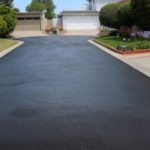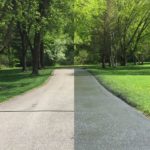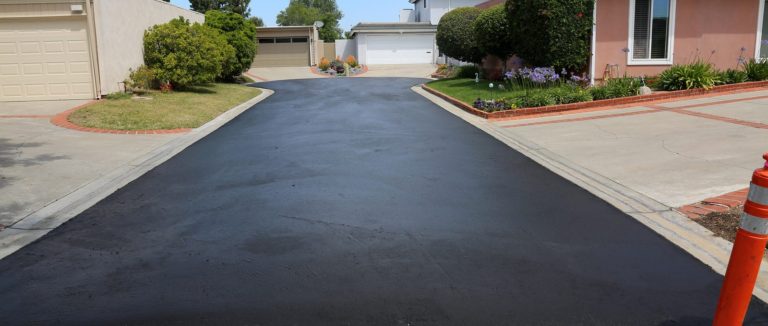When it comes to Asphalt Sealcoating, there are many common mistakes that people make. If you are interested in learning how to avoid making these mistakes and get the best sealcoating results possible, then this article will be of interest to you.
We have identified six common mistakes people make with asphalt sealcoating, so read on to learn more!
Applying Too Much or The Wrong Kind of Sealer
It is tempting to want to lay down a thick layer of sealer, but resist the urge! You might think more sealer is better, but that is not the case.
 Applying too much sealer will actually do more harm than good because it can lead to premature cracking, tracking, and other problems. Plus, it is a waste of money.
Applying too much sealer will actually do more harm than good because it can lead to premature cracking, tracking, and other problems. Plus, it is a waste of money.
The key is to apply a thin, even coat of sealer. Be sure to read the instructions on the product you are using to determine the proper amount to apply.
Also, ensure you use a high-quality sealer designed for your specific needs. Coal tar-based sealer, asphalt sealer, or acrylic polymer sealer are all great options that will protect your asphalt and keep it looking its best.
Using The Wrong Application Tools
Another mistake people make when Asphalt Sealcoating their asphalt is using the wrong application tools. You should never use a squeegee to apply an asphalt sealer. A squeegee will leave lines in the sealer that will be visible once it dries. You can use a broom to apply the sealer to small areas, but a brush or roller should be used for larger areas.
Using Sealcoat Products As a Crack Filler
This is a mistake for two reasons.
 First, the asphalt sealcoat is not designed to fill gaps or cracks; it is made to protect the surface of the asphalt from weathering and wear.
First, the asphalt sealcoat is not designed to fill gaps or cracks; it is made to protect the surface of the asphalt from weathering and wear.
Second, using Asphalt Sealcoating products as a filler will make your driveway look patchy and unprofessional.
Improper Prep Work
Sealcoating your asphalt is vital to protect it from the elements and extend its lifespan, but you cannot just slap a coat of sealer on top of dirt and hope for the best.
If you do not properly clean your asphalt before applying a seal coat, you are essentially just sealing in all the dirt, grime, and other materials already on the surface. This can lead to premature deterioration of the seal coat and shorten its lifespan.
Make sure to pressure wash or thoroughly clean your asphalt before applying a seal coat.
Not Allowing The Sealer To Dry Properly
 Another one of the most common mistakes people make is not allowing the sealer to dry properly before driving or walking on it. This can cause the sealer to track or even become damaged.
Another one of the most common mistakes people make is not allowing the sealer to dry properly before driving or walking on it. This can cause the sealer to track or even become damaged.
The best way to ensure your sealer is dry is to wait at least 24 hours after application before exposing it to any traffic.
Sealcoating in “Less-Than-Ideal” Weather Conditions
The biggest mistake people make is not waiting for ideal weather conditions to apply sealer.
The temperature needs to be just right — not too hot and not too cold — for the sealer to adhere to the asphalt properly. If it is too hot, the sealer will dry too quickly and not have time to properly bond. If it is too cold, the sealer will not dry at all and will just end up being a waste of time and money.
Conclusion
Asphalt sealcoating can protect your parking lot, driveway, or sidewalk from the damaging effects of weather and traffic, but it can also be easily rendered ineffective by improper application.
When it comes to asphalt sealcoating, it is easy to make mistakes that will cause more harm than good. If you want to Asphalt Sealcoating your driveway or parking lot, avoid these common mistakes and get the most out of your sealing job.
Address
Commonwealth Paving, 136 Outerloop, Louisville, Kentucky 40214
Phone: 502-459-7283, Fax: 502-456-2678
Opening Hours
| Monday | 9:00 AM – 5:00 PM |
| Tuesday | 9:00 AM – 5:00 PM |
| Wednesday | 9:00 AM – 5:00 PM |
| Thursday | 9:00 AM – 5:00 PM |
| Friday | 9:00 AM – 5:00 PM |
| Saturday | Closed |
| Sunday | Closed |







